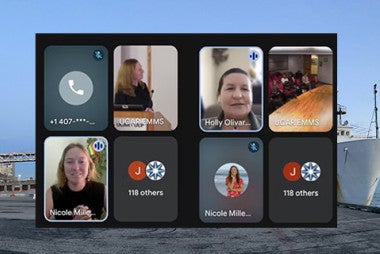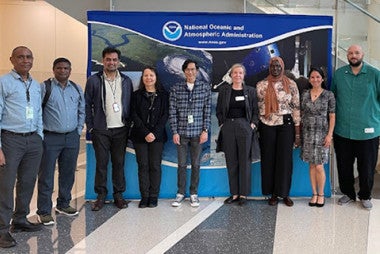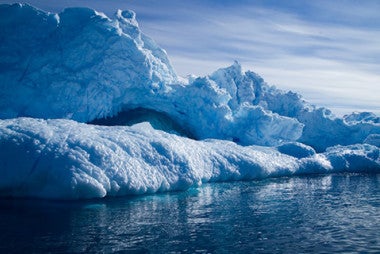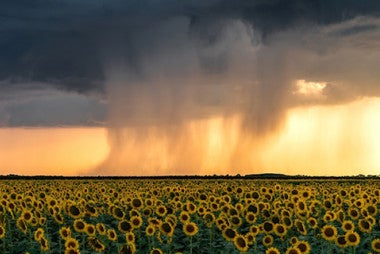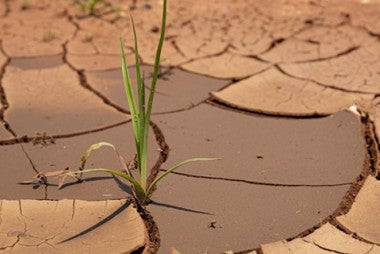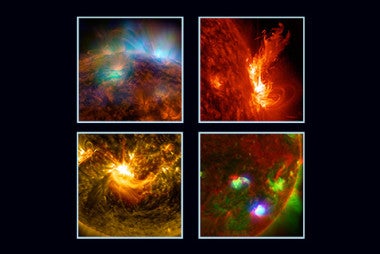Joshua Alland receives Outstanding Achievement Award for innovations in hurricane risk communication

Joshua Alland, CPAESS Associate Scientist at the National Hurricane Center.
Joshua Alland has been recognized with an Outstanding Achievement Award from the 2025 National Hurricane Conference Awards program for “development of new decision-support tools and services at the [NOAA] National Hurricane Center (NHC) to better communicate impact and risk to the public.”
Alland is an associate scientist and tropical cyclone researcher with the UCAR | Cooperative Programs for the Advancement of Earth System Science (CPAESS) who is based in Miami, Florida with the NHC. Prior to joining the NHC, he was a postdoctoral fellow at the NSF National Center for Atmospheric Research (NSF NCAR).
“He led the technical development and prototyping of improvements to NHC products, messaging, and decision-support services including the new experimental cone, a media-ready display system, and web mapping services,” wrote NHC Branch Chief Daniel Brown in his nomination letter.
The NHC introduced this experimental display system during the 2024 hurricane season. Among Alland’s innovations was the inclusion of layers of information added to the cone of uncertainty – the probable track of the center of a hurricane at certain time intervals. Specifically, it allowed the NHC to continue the practice of including warnings for coastal regions while adding inland tropical storm and hurricane watches and warnings for the continental United States.

The new visualization system enhances risk communication by allowing for the overlay of multiple hazard information, as well as the ability to zoom in to localize risk. Shown here is the cone with inland watches and warnings overlaid for Hurricane Helene in 2024. Credit: NOAA NHC/Joshua Alland.
This is an important advance because these watches and warnings convey the risk of strong winds whereas the cone, on its own, does not convey the risk of winds. This innovation effectively removed a gap in information delivery that could potentially leave millions of people in harm’s way if they remained unaware of inland warnings because hazardous conditions can occur inland but outside of the cone.
“This graphic was used to highlight the inland wind threat during U.S. landfalling Hurricanes Milton and Helene,” said Brown. “Damaging winds from Helene penetrated unusually far inland and this threat would have been otherwise difficult to communicate had it not been for the new experimental cone graphic.”
Alland also led the technical development of a new visualization system used at the NHC media desks for interviews during landfalling tropical cyclones. During Helene, for example, the NHC used the new system to conduct nearly 150 local and national interviews, receiving over 1.3 million views.
Alland’s improvements have resulted in a tool to provide clearer, consistent messaging about risk to the public and to aid decision making when time is of the essence. His work strengthens the NHC mission of saving lives through the best watches, warnings, forecasts, and analyses of severe tropical weather events.
Finally, Alland led the prototyping and technical development of a new rip current risk graphic that will highlight the risks associated with rip currents that lead to more than 100 deaths each year in the U.S. The new rip current viewer will be hosted on the NHC website starting with the 2025 hurricane season.
“I feel very grateful to work at the NHC where I am part of a team of incredible scientists and communicators who dedicate their lives to serving the public,” said Alland.
Alland will accept the Outstanding Achievement Award at the 2025 National Hurricane Conference.

